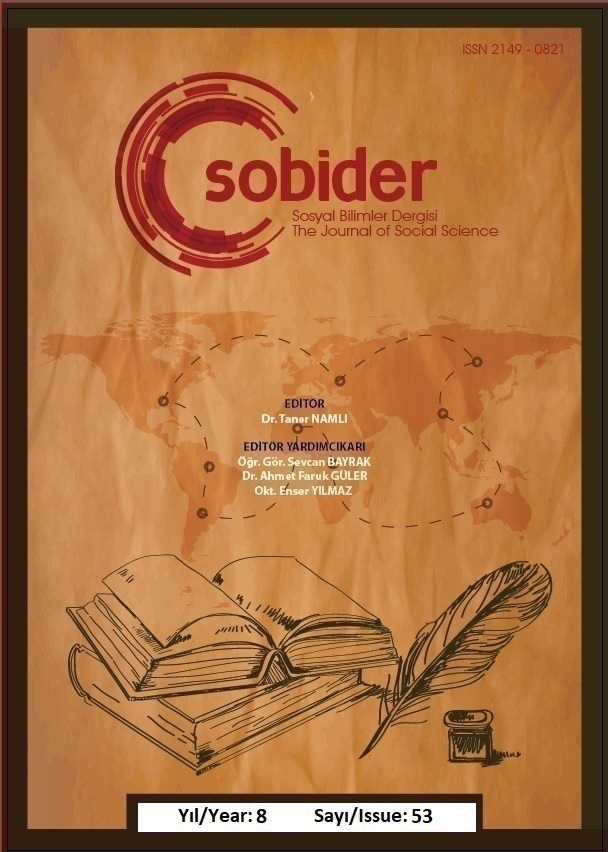Author :
Abstract
Bu çalışmanın odağı kadın hakları üzerindedir. Kadın hakları, insan haklarının temeline dayanmaktadır. Bu araştırma’da İran anayasası ve İnsan Hakları Evrensel Beyannamesi arasında herhangi bir tutarsızlık olup olmadığını analiz edildi. 1979 devriminden sonra, İran anayasası yeniden düzenlendi ve sharia kuralları İran İslam Cumhuriyeti anayasasına eklendi. Bu çerçevede kadın erkek ilişkileri bu anayasa çerçevesinde yeniden gözden geçirildi. Bu araştırmada İran anayasasında kadın hakları, evrensel haklar beyannamesile karşılaştırıldı. İnsan Hakları Evrensel Beyannamesinde tüm insanlar ve uluslar için standart ve temel haklara sahipler.
Nitel araştırma yöntemleri kullanarak İran anayasası ve İnsan haklarının evrensel bildirgesi karşılaştırıldı. Bu karşılaştırmada aşağıdaki alanlarda yapıldı; Birincisi, yasalar karşısında eşit haklara sahip olmak. İkincisi, çalışma hakkı. Üçüncüsü, siyasi alanda çalışma hakkı. Dördüncüsü, eğitim hakkı. Beşinci olarak, serbest dolaşım ve serbest giyinme hakkı Nitel içerik analizi ile İran anayasası ile evrensel insan hakları beyannamesi arasındaki tutarsızlık incelenmiştir. Ayrıca, bu tutarsızlıkların kadınların gerçek yaşam koşullarını nasıl etkilediği bu makalede daha ayrıntılı olarak ele alınmıştır.
Keywords
Abstract
The focus of this study is on women rights. Women rights is based on human rights. This study analyzed whether there is any inconsistency between Iran’s Islamic constitution and Universal declaration of Human Rights. After 1979 revolution sharia rules were added to Iran’s Islamic constitution. Iran’s constitution and family law attachment (Iran’s constitution; https://www.wipo.int/edocs/lexdocs/laws/en/ir/ir001en.pdf) which were approved after 1979 revolution redefine men and women relationship is compared with Universal Declaration of Human Rights which is a common standard for rights and freedoms for all people and nations.
Qualitative research methodology are used for comparison of Iran’s constitution and Universal declaration of Human rights. These contrastive analysis are conducted at the following domains; first, equal recognition of women in front of law. Second, The right to work and employment. Third, the right to work in political arena. Fourth, the right for education. Fifth, the right for free movement and dressing.
By means of qualitative content analysis, the inconsistency between Iran’s constitution and universal declaration of human rights are studied. Moreover, how these inconsistencies have affected women’s real life conditions are more elaborated in this essay.
Keywords
- Higgins, P.(1985).“Women in the Islamic Republic of Iran: Legal, Social and Ideological Changes”, Vol. 10, No. 3, Published by The University of Chicago Press , http://www.jstor.org/pss/3174262,Vol. 10, No. 3. 477-494.
- Joint report from the Danish Immigration Service, Danish Refugee Council (2017), 1- 30. Karimi, M. (2006). “Human Rights and Constitution of Islamic Republic of Iran”, Jelveh Kamal Press,78-84.
- Milli, A. (2009),“Exploring the relationship between Gender Politics and Representative Government in Maghreb: Analytical and Empirical Observations”, PhD degree, Rutgers, Newjersy, 1-288.
- Mirhosseini, Z. (2002).“The Conservative Reformist Conflict over Women's Rights in Iran”, International Journal of Politics, Culture and Society, Springer link, Vol. 16, No.1, 37-53. Moghadam, V. (2010).“Women in the Islamic Republic of Iran: Legal Status”, Social Positions, and Collective Action,Wilson Center,1-16.
- Moghadam, V. (2010).“Islamic Feminism and its Discontents: Toward a Resolution of the Debate”, Women’s Rights in the Middle East and North Africa,Freedom House - Gozaa,1-10.
- Moinifar, H. (2013), “Participation of Womenin Iran’s Polity”, GEMC journal, Apecial İssue, no 4. 1-27.
- Shahidian, H. (2002). Women in Iran,“Gender Politics in the Islamic Republic”,Greenwood Press, CT,1-10.
- Tohidi, N.(2010). “Women’s Rights in the Middle East and North Africa”, Iran, Freedom House - Gozaar, 1-21.
- Translation of Constitution of Islamic Republic of Iran (1989), Published by Iranian Studies,47:1, 159-200.





